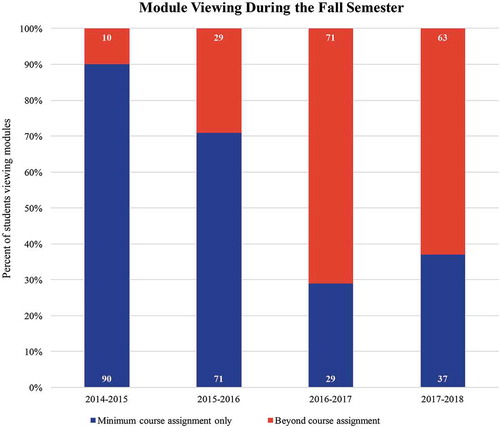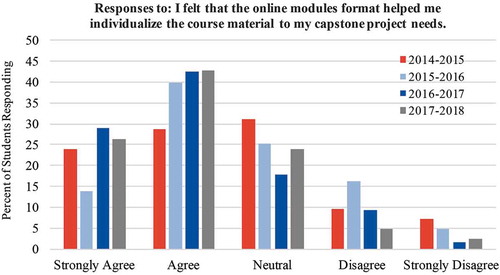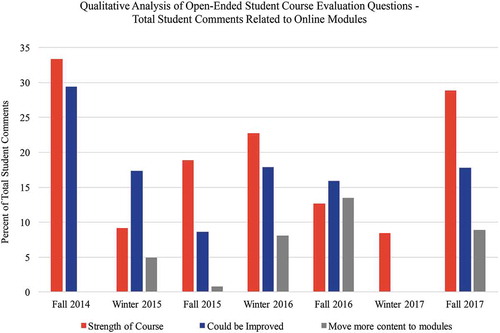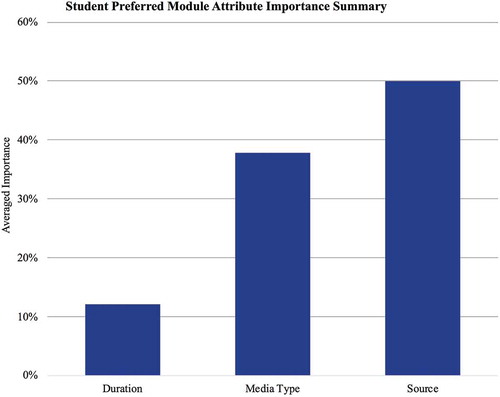Figures & data
Table 1. Threads of Embark program online modules and content titles.
Table 2. Factors and levels for module attributes.
Figure 1. Percent of students viewing modules during the fall semester of their M1 year. Module viewing was tracked. Total percent of students viewing the minimum number of modules for the course assignment (blue) and percent of students viewing more modules than required for the course assignment (beyond the course assignment, red) are shown here. Students viewing modules beyond the course assignment increased after the recalibration of module thread deadlines in the Fall of 2016 (Fall 2014, 10%; Fall 2015, 29%; Fall 2016, 71%; Fall 2017, 63%).

Table 3. Most preferred modules in the fall semester.
Figure 2. Student responses regarding online modules and course individualization. Students responded via a Likert scale to the prompt ‘I felt that the online modules format helped me individualize the course material to my capstone project needs.’ The responses were collected from in-class anonymous survey questions (2014–2015, n = 42) and course evaluations (2015–2016, n = 123; 2016–2017, n = 118; 2017–2018, n = 126).

Figure 3. Qualitative analysis of student feedback regarding strengths and weaknesses of the course in open-ended course evaluation questions. Total student comments related to modules are shown from ‘Please list the strengths of this course’ and ‘Please list ways this course might be improved’ course evaluation questions. In the ‘could be improved’ category, a larger portion of comments related to modules focused on the request for more content to be moved to modules (gray bars).


